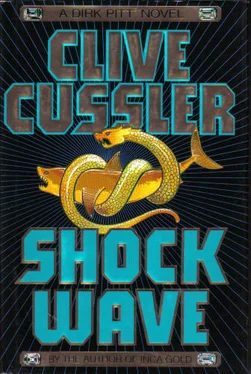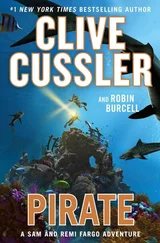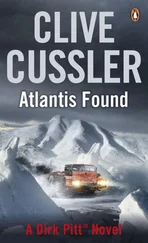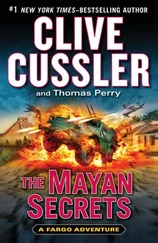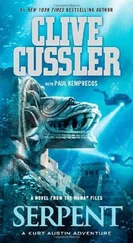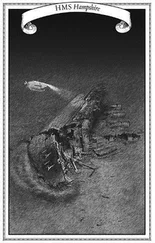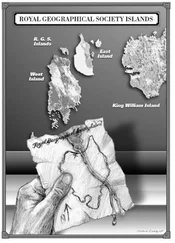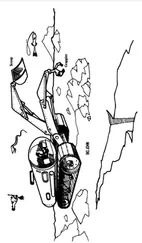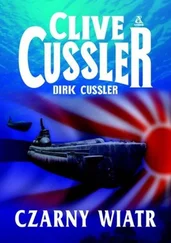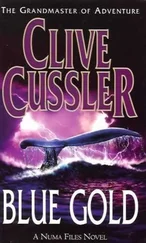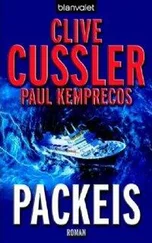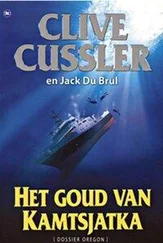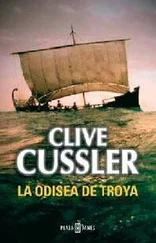Clive Cussler - Shock Wave
Здесь есть возможность читать онлайн «Clive Cussler - Shock Wave» весь текст электронной книги совершенно бесплатно (целиком полную версию без сокращений). В некоторых случаях можно слушать аудио, скачать через торрент в формате fb2 и присутствует краткое содержание. Год выпуска: 1996, ISBN: 1996, Издательство: Simon & Schuster, Жанр: Детектив, на английском языке. Описание произведения, (предисловие) а так же отзывы посетителей доступны на портале библиотеки ЛибКат.
- Название:Shock Wave
- Автор:
- Издательство:Simon & Schuster
- Жанр:
- Год:1996
- ISBN:978-0684802978
- Рейтинг книги:5 / 5. Голосов: 1
-
Избранное:Добавить в избранное
- Отзывы:
-
Ваша оценка:
- 100
- 1
- 2
- 3
- 4
- 5
Shock Wave: краткое содержание, описание и аннотация
Предлагаем к чтению аннотацию, описание, краткое содержание или предисловие (зависит от того, что написал сам автор книги «Shock Wave»). Если вы не нашли необходимую информацию о книге — напишите в комментариях, мы постараемся отыскать её.
Shock Wave — читать онлайн бесплатно полную книгу (весь текст) целиком
Ниже представлен текст книги, разбитый по страницам. Система сохранения места последней прочитанной страницы, позволяет с удобством читать онлайн бесплатно книгу «Shock Wave», без необходимости каждый раз заново искать на чём Вы остановились. Поставьте закладку, и сможете в любой момент перейти на страницу, на которой закончили чтение.
Интервал:
Закладка:
Perlmutter shook his head. “The next fifteen days became a saga of horror and death. Storms, thirst and starvation, and a mad slaughter between the sailors, a few soldiers and the convicts decimated the people clinging to the raft. When it finally drifted onto the reef of an uncharted island and went to pieces, legend has it the survivors were saved from a great white shark by a sea serpent while swimming to shore.”
“Which explains the Dorsett hallmark. It came from the hallucinations of near-dead people.”
“I wouldn’t be surprised. Only eight of the original 231 poor souls who left the ship staggered onto a beach-six men and two women more dead than alive.”
Pitt looked at Perlmutter. “That’s 223 lost. A staggering figure.”
“Of the eight,” Perlmutter went on, “a seaman and a convict were later killed after fighting over the women.”
“A replay of the mutiny on the Bounty.”
“Not quite. Two years later, Captain Scaggs and his remaining seaman, luckily for him the Gladiator’s carpenter, built a boat out of the remains of a French naval sloop that was driven on the rocks by a storm with the loss of all hands. Leaving the convicts behind on the island, they sailed across the Tasman Sea to Australia.”
“Scaggs deserted Dorsett and Fletcher?”
“For a very good reason. The enchantment of living on a beautiful island was preferred to the hell of the prison camps at Botany Bay. And because Scaggs felt he owed his life to Dorsett, he told the penal colony authorities that all the convicts had died on the raft so the survivors could be left in peace.”
“So they built a new life and multiplied.”
“Exactly,” said Perlmutter. “Jess and Betsy were married by Scaggs and had two boys, while the other two convicts produced a girl. In time they built a little family community and began trading food supplies to whaling ships that began making Gladiator Island, as it later became known, a regular stopover during their long voyages.”
“What became of Scaggs?” asked Pitt.
“He returned to the sea as master of a new clipper ship owned by a shipping company called Carlisle & Dunhill. After several more voyages to the Pacific, he retired and eventually died, twenty years later, in 1876.”
“Where do diamonds enter the picture?”
“Patience,” said Perlmutter like a schoolteacher. “A little background to better understand the story. To begin with, diamonds, though instigating more crime, corruption and romance than any other of the earth’s minerals, are merely crystallised carbon. Chemically, they’re sister to graphite and coal. Diamonds are thought to have been formed as long ago as three billion years, anywhere from 120 to 200 kilometers deep in the earth’s upper mantle. Under incredible heat and pressure, pure carbon along with gases and liquid rock forced their way toward the surface through volcanic shafts commonly referred to as pipes. As this blend exploded upward, the carbon cooled and crystallized into extremely hard and transparent stones. Diamonds are one of the few materials to touch the earth’s surface from remote depths.”
Pitt stared at the floor, trying to picture nature’s diamond-making process in his mind. “I assume a cross section of the ground would show a trail of diamonds swirling upward to surface in a circular shaft that widens at the surface like a raised’ funnel.”
“Or a carrot,” said Perlmutter. “Unlike pure lava, which raised high, peaked volcanoes when it reached the surface, the mix of diamonds and liquid rock, known as kimberlite pipes after the South African city of Kimberly, cooled rapidly and hardened into large mounds. Some were worn down by natural erosion, spreading the diamonds into what are known as alluvial deposits. Some eroded pipes even formed lakes. The largest mass of crystallized stones, however, remained in the underground pipes or chutes.”
“Let me guess. The Dorsetts found one of these diamond-laden pipes on their island.”
“You keep getting ahead of me,” Perlmutter muttered irritably.
“Sorry,” Pitt said placatingly.
“The shipwrecked convicts unknowingly found not one, but two phenomenally rich pipes in volcanic mounds on opposite ends of Gladiator Island. The stones they found, which were freed from the rock by centuries of rain and wind, simply appeared to be `pretty things,’ as Betsy Fletcher referred to them in a letter to Scaggs. Actually, uncut and unpolished diamonds are dull-looking stones with almost no sparkle. They often feel and look like an oddly shaped bar of soap. It was not until 1866, after the American Civil War, that a U.S. Navy vessel on an exploratory voyage to find possible sites for deepwater ports throughout the South Pacific stopped at the island to take on water. On board was a geologist. He happened to see the Dorsett children playing a game with stones on the beach and became curious. He examined one of the stones and was amazed as he identified it as a diamond of at least twenty carats. When the geologist questioned Jess Dorsett as to where the stone came from, the cagey old highwayman told him he brought it with him from England.”
“And that timely little event launched Dorsett Consolidated Mining.”
“Not immediately,” said Per’ mutter. “After Jess died, Betsy sent her two boys, Jess Junior and Charles, no doubt named after Scaggs, and the daughter of the other two convicts, Mary Winkleman, to England to be educated. She wrote Scaggs for his help and included a pouch of uncut diamonds to pay for this undertaking, which the captain turned over to his friend and former employer, Abner Carlisle. Acting on behalf of Scaggs, who was on his deathbed, Carlisle had the diamonds faceted and polished, later selling them on the London exchange for nearly one million pounds, or about seven million dollars, in the currency of the time.”
“A tidy sum for college tuition for those days,” Pitt said consideringly. “The kids must have had a ball.”
Perlmutter shook his head. “You’re wrong this time. They lived frugally at Cambridge. Mary attended a proper girl’s school outside of London. She and Charles married soon after he took his degree, and they returned to the island, where they directed the mining operations in the dormant volcanoes. Jess Junior remained in England and opened the House of Dorsett in partnership with a Jewish diamond merchant from Aberdeen by the name of Levi Strouser. The London end of the business, which dealt in the cutting and sale of diamonds, had luxurious showrooms for retail sales, elegant offices on the upper floors for larger wholesale trading and a vast workshop in the basement, where the stones from Gladiator Island were cut and polished. The dynasty prospered, helped in no small measure by the fact that the diamonds that came out of the island pipes were a very rare violet-rose color and of the highest quality.”
“The mines have never played out?”
“Not yet. The Dorsetts have been very shrewd in holding back much of their production in cooperation with the cartel to hold up the price.”
“What about offspring?” asked Pitt.
“Charles and Mary had one boy, Anson. Jess Junior never married.”
“Anson was Arthur’s grandfather?” Pitt asked.
“Yes, he ran the company for over forty years. He was probably the most decent and honest of the lot. Anson was satisfied to run and maintain a profitable little empire. Never driven by greed like his descendants, he gave a great deal of money to charity. Any number of libraries and hospitals throughout Australia and New Zealand were founded by him. When lie died in 1910, he left the company to a son, Henry, and a daughter, Mildred. She died young in a boating accident. She fell overboard during a cruise on the family yacht and was taken by sharks. Rumors circulated that she was murdered by Henry, but no investigations were made. Henry’s money made sure of that. Under Henry, the family launched a reign of greed, jealousy, cruelty and ravenous power that continues to this day.”
Читать дальшеИнтервал:
Закладка:
Похожие книги на «Shock Wave»
Представляем Вашему вниманию похожие книги на «Shock Wave» списком для выбора. Мы отобрали схожую по названию и смыслу литературу в надежде предоставить читателям больше вариантов отыскать новые, интересные, ещё непрочитанные произведения.
Обсуждение, отзывы о книге «Shock Wave» и просто собственные мнения читателей. Оставьте ваши комментарии, напишите, что Вы думаете о произведении, его смысле или главных героях. Укажите что конкретно понравилось, а что нет, и почему Вы так считаете.
